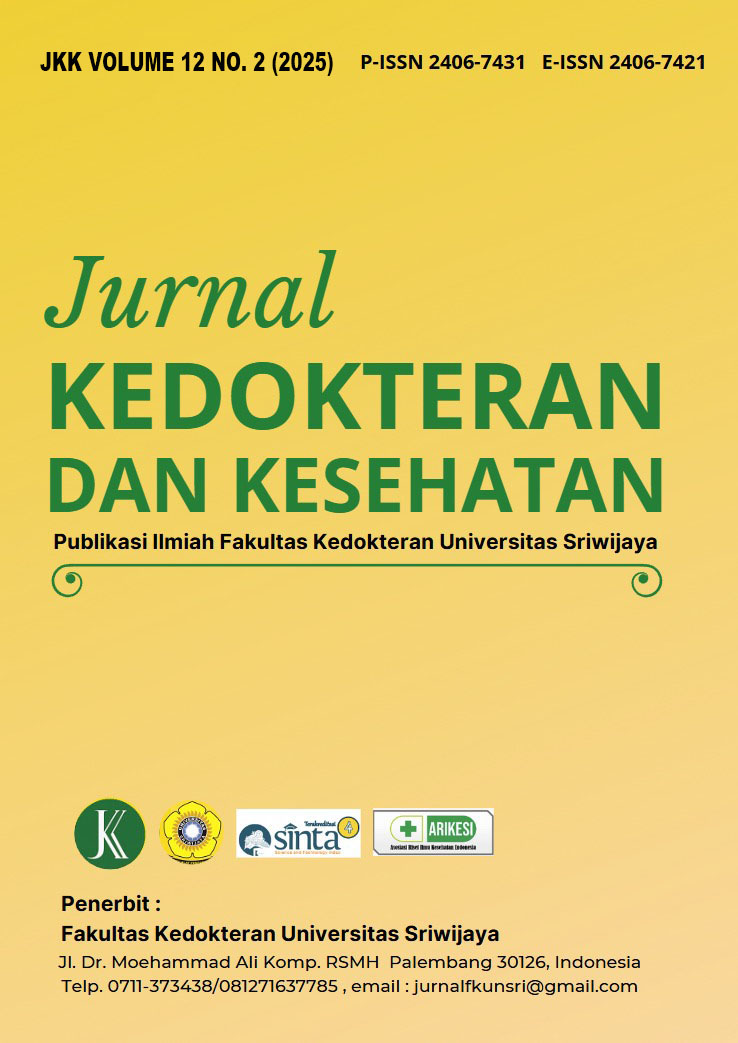DIGITAL CALIPER VS. INTRAORAL SCANNER: ACCURACY OF UPPER INTER-CANINE WIDTH MEASUREMENTS IN STUDY MODELS
Main Article Content
The upper canine teeth exhibit significant sexual dimorphism, making them frequently used in gender identification in forensic odontology. The measurement of the inter-canine width can be performed using conventional methods, such as a digital caliper, or modern methods using an intraoral scanner. The intraoral scanner offers higher accuracy and easier data storage; however, no studies have compared the inter-canine width of the upper jaw using both methods. This study measured the inter-canine width of the upper jaw on 80 jaw models using both instruments, with each measurement performed three times per instrument. The measurement results were analyzed using SPSS, with Intraclass Correlation Coefficient (ICC) for agreement, Kolmogorov-Smirnov for normality, and Independent T-test for significance. The ICC results showed good agreement (0.892), and the Independent T-test revealed no significant difference (p = 0.598). It can be concluded that there is no significant difference between the measurement of the upper inter-canine width using the intraoral scanner and the digital caliper.
2. Gandhi N, Jain S, Kahlon H, Singh A, Gambhir R, Gaur A. Significance of mandibular canine index in sexual dimorphism and aid in personal identification in forensic odontology. J Forensic Dent Sci. 2017;9(2):56–60.
3. Jardim M, Pereira PM, Proença L, Bugaighis I. Precision of Tooth Size Measurement in Digital Models Acquired by Intraoral Scanning and by Scanning of Plaster Models Versus Conventionally Cast Models. Med Sci Forum. 2023;22(20):1.
4. Jha PC, Sanghamesh NC, Alok A, Singh S, Bharti BB, Raj R. Dimorphism of Canine: A Diagnostic Value in Gender Identification-A Clinical Study. Int J Sci Study. 2015;3(8):81–4.
5. Johnson A, Abraham S, Pandey A, Jani G, Thomas A. Accuracy and reproducibility of 3D data acquisition for human teeth using intra-oral scanners: A forensic odontological approach. J Indian Acad Forensic Med. 2021;43(4):324–8.
6. Khangura RK, Sircar K, Singh S, Rastogi V. Sex determination using mesiodistal dimension of permanent maxillary incisors and canines. J Forensic Dent Sci. 2011;3(2):81–5.
7. Kiviahde H, Bukovac L, Jussila P, Pesonen P, Sipilä K, Raustia A, et al. Inter-arch digital model vs. manual cast measurements: Accuracy and reliability. Cranio: Journal of Craniomandibular Practice. 2018;36(4):222–7.
8. Kumar SS, Chacko R, Kaur A, Ibrahim G, Ye D. A Systematic Review of the Use of Intraoral Scanning for Human Identification Based on Palatal Morphology. Diagnostics. 2024;14(5):531. Available from: https://www.mdpi.com/2699868
9. Liu J, Liu Y, Wang J, Zuo X, Wang X, Zhang Y, et al. Dental measurements based on a three-dimensional digital technique: A comparative study on reliability and validity. Arch Oral Biol. 2021;124:105059.
10. Malinda Y, Yohana W, Putra YH, Oscandar F. The Maxillary and Mandibular Intercanine Distance as Gender Identification Method from Bitemark: A Rapid Review. J Int Dent Med Res. 2023;16(1):417–22.
11. Manhaes-Caldas D, Oliveira ML, Groppo FC, Haiter-Neto F. Volumetric assessment of the dental crown for sex estimation by means of cone-beam computed tomography. Forensic Sci Int. 2019;303.
12. Patel RA, Chaudhary AR, Dudhia BB, Macwan ZS, Patel PS, Jani YV. Mandibular canine index: A study for gender determination in Gandhinagar population. J Forensic Dent Sci. 2017;9(3):135–43.
13. Patil SS, Aher SD, Nehete AB, Gulve ND, Tambe MS, Shukla RM. Gender determination using intercanine, intermolar, and canine fossa width - Avaluable tool in forensic odontology. Journal of Academy of Dental Education. 2023;9(1):18–23.
14. Phulari R, Rathore R, Talegaon T, Jariwala P. Comparative assessment of maxillary canine index and maxillary first molar dimensions for sex determination in forensic odontology. J Forensic Dent Sci. 2017;9(2):110.
15. Prasetiowati L, Yuliawati TH, Purwantari KE. Determinasi Jenis Kelamin Menggunakan Parameter Morfologi dan Morfometrik pada Mandibula. Prosiding Kongres XV & HUT Ke-52 PAAI 2023 - 4th Lummens Banjarmasin: Program Studi Kedokteran Program Sarjana Fakultas Kedokteran Universitas Lambung Mangkurat. 2023;
16. Putrino A, Bruti V, Enrico M, Costantino C, Ersilia B, Gabriella G. Intraoral Scanners in Personal Identification of Corpses: Usefulness and Reliability of 3D Technologies in Modern Forensic Dentistry. Open Dent J. 2020;14(1):255–66. Available from: https://opendentistryjournal.com/VOLUME/14/PAGE/255/FULLTEXT/
17. Rajshekar M, Julian R, Williams AM, Tennant M, Forrest A, Walsh LJ, et al. The reliability and validity of measurements of human dental casts made by an intra-oral 3D scanner, with conventional hand-held digital callipers as the comparison measure. Forensic Sci Int. 2017;278:
18. Rao GV, Kiran G. Sex Determination by means of Inter-Canine and Inter-Molar Width- A Study in Telangana population. Asian Pac J Health Sci [Internet]. 2016;3(4):171–5.
19. Singh R, Garg K, Singh SK. Sex Determination by Evaluating Inter-Canine Distance and MesioDistal Width of Mandibular Canine. International Healthcare Research Journal. 2017;1(9):284–91.
20. Zulfatunnadiroh L, Prastyo E, Rachmawati F, Wardana R, Perdini D. Intercanine Distance (ICD) Measurement Using Metric Analysis And Digital Imaging in Bite Mark Gender Identification. Indonesian Journal of Legal and Forensic Sciences (IJLFS). 2022;12(1):28–36.


